
sedge or white root, Carex barbarea
My last visit to Grace Hudson Museum in Mendocino County I was surprised and delighted to discover that the director was in the process of creating a garden at the museum that would contain nothing but plants native to Northern California that had been used for centuries by the Native American peoples who inhabited the terrain. This included the Pomo, the Wailaki and the Kato Indians. I knew this would afford visitors a very unique opportunity to learn invaluable information about their own surroundings, information that traditionally goes unnoticed, unexplored and untapped. So I made a mental note to return once the garden was underway and this week I kept that promise to myself. I first spent about an hour simply walking around the garden, still being established, but well on its way, examining and photographing plants that I found myself drawn to. This was followed later in the afternoon with an interview with director Sherrie Smith-Ferri, who kindly shared her impressive knowledge of these plants with me.
In all honesty though a couple of the plants I photographed looked familiar, I really could not name anything beyond the wild grape. And given that I have lived in wine country for many years, I must confess that I never think of grapes as anything I might encounter in the wild, and, in fact, never have. Nevertheless, apparently they are out there, probably beyond where I would trek, and the fruit, I was told later, is small, the seeds large, so it would be more common for animals to find them worthy fare, though now I want to find starter plants and install them in my environment for their beauty if nothing else. Native peoples ate the fruit in late summer and on occasion used the vines in their basketry.
When I returned in the late afternoon to secure more information about the plants Sherrie explained that both sedge (above) and bulrush were used by Native American peoples in their basket making. [It should be noted that the Grace Hudson Museum is home to an exquisite collection of Native American baskets, a post I hope to create before year’s end.] I was surprised to learn, however, that it was the rhizomes, the runner roots, that the basketmakers sought as their weaving materials, not the sedge or bulrush leaves themselves. Any Bible readers will recall that bulrush was used by the Egyptians for their baskets as well. It is found on the edge of lakes and ponds and was prized by Native Americans for its dark color, thus serving as the black material used in baskets. Sometimes the root was dyed with black walnut husks and iron to make the color even darker. Here is a photo of the ones growing at the museum.

bulrush, or black root, Scirpus robustus
Now, given that I went to university in Ohio I really ought to have known the next plant I logged: the buckeye.
I found it amusing when Sherrie told me the buckeye had been regarded as a “second class food” which is not terribly surprising when you additionally learn that the fruit is poisonous, and requires extensive treatment, being roasted, ground and leached, to make it safely palatable. The fruit can also be boiled extensively rendering a carbohydrate, perhaps for lean times. I found the flower interesting and could imagine using in an arrangement!
A plant I’d be more inclined to readily eat which I found growing in the garden was the elderberry.
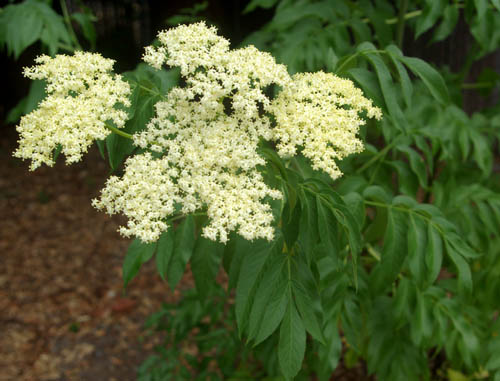
elderberry, Sambucus mexicana
You will readily imagine my surprise that while the Native Americans also appreciated the fruits of the elderberry tree, what they most prized were the hollowed out branches, not unlike bamboo, which they used to make clapper sticks, rhythmical instruments used to accompany their singing.
Next to the elderberry is an extensive dogbane stand. Energetically I enjoyed being with this plant and photographing it. I felt a particular kinship.
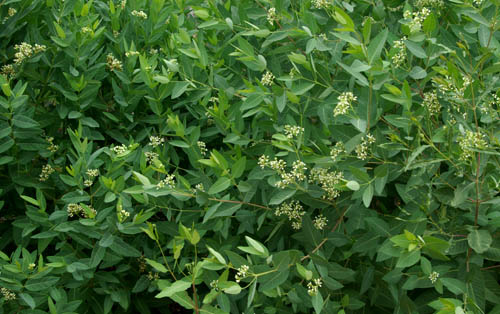
dogbane, Apocynum cannabinum
When I spoke with Sherrie about dogbane she told me the plant is very much flourishing, bordering on invasive and will have to be kept in check. Good to know! This plant also carried a surprise history in that Native Americans use the stems by rolling them on their thigh or leg, rendering a fiber commonly used in making fishing nets, belts, and sometimes for stringing beads. I want to see that done, don’t you?
Among the greenery I found a flurry of small purple flowers, and photographed a single one for us to ponder.

Ithuriel’s spear, Triteleia laxa
In spite of the lyrical and lofty common name I was informed it is one of several “Indian potatoes” which are all from the lily family. The bulbs, which were roasted to sweetness, were an important food source. It bears a lovely flower.
Finally a plant revealed itself with which I have some small history–yerba santa, not unknown to my early San Francisco herb learning.

yerba santa or mountain balm, Eriodictyon californicum
The leaves are to this day used as a medicinal tea, taken both internally or used as an external wash. Yerba santa was a highly prized herb to the Native Americans. We should take note.
I hope I have inspired you, dear readers, to explore what might be growing in your own immediate environs. By exploring the local Native American traditions of your own locale I’m suspecting you will open the doors to invaluable wisdom discovered over many generations of which you might avail yourselves, who knows to what advantage?
Love and gardening blessings,
Kathryn xoxo
Posted on June 7th, 2009 by Kathryn
Filed under: Plants
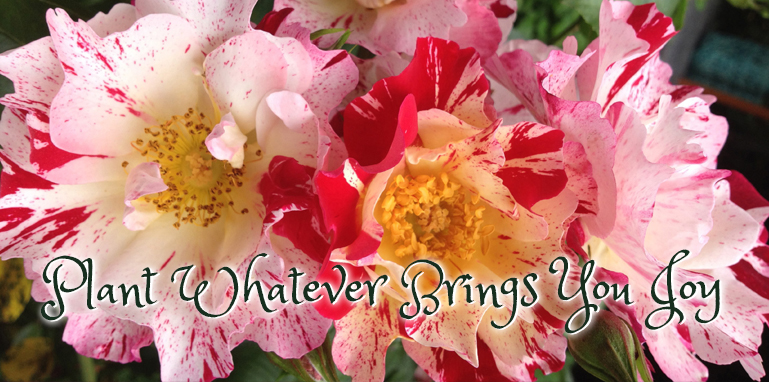
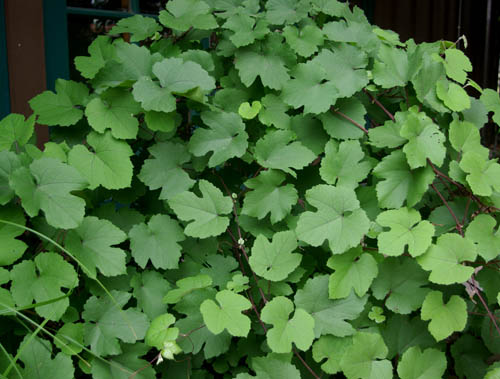
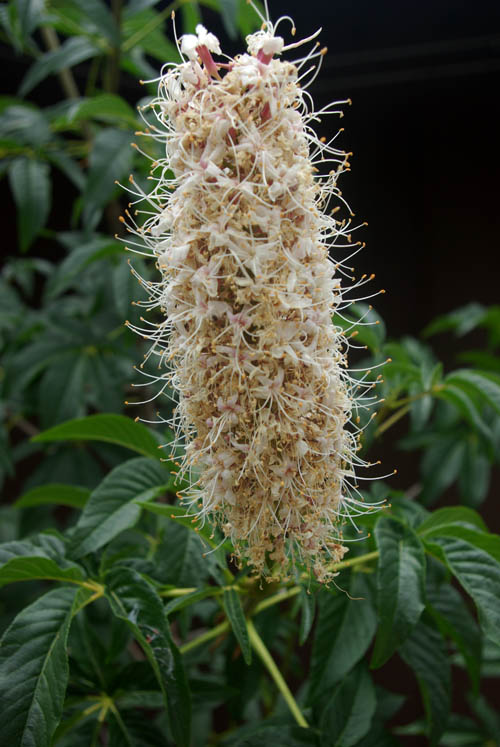






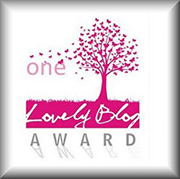
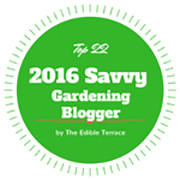

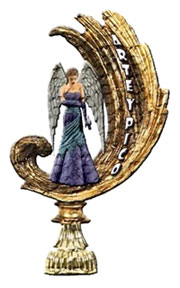
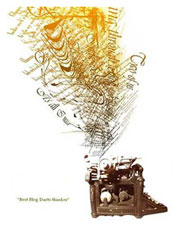
Hi mom,
How very Lovely to share the rich cultural history of the native plants!
Your photos are Beautiful, as always! I’m particularly drawn to the Ithuriel’s spear (Triteleia laxa).
Wow! What an Amazing colour! 🙂
Love you,
Antonia
xoxox
Good evening, Antonia! Thank you! Yes, I think I will get a lot of mileage out of this visit. And the Ithuriel’s spear is, indeed, very very pretty. 🙂 Love, Mom xoxo
We spent the weekend in Point Reyes and walked through the Indian trail. In it, all the plants the coastal Miwoks used were identified and their uses described in placards throughout the trail. It is amazing how our ancestors could take a single plant and use it to treat fifteen different ailments and to flavor their food!
Hi, Green Bean! How fun! I’m aware the Miwoks lived in Marin, but I had not heard of the Indian trail. Thanks for letting us know about that! One thing Sherri pointed out to me was that these folks were hunters and gatherers, not gardeners by any stretch. They weren’t cultivating these plants. They were finding them.
It reminded me of how people used to relate to bees–they went out and found them. The Native Americans had a very long peaceful stretch of time to learn all they learned. We are so lucky to be able to learn even a small bit of what they have to teach us. Thanks for the visit. Kathryn xoxo
Hi Kathryn, what a lovely informative post. I really enjoyed it – and your photos are glorious too 🙂
Whilst we don’t have any Native Americans in deepest Derbyshire, we do have some very ancient cave dwellers caves, complete with cave paintings, about 1/2 an hour’s drive away at Creswell Crags – some of their drawings show foodstuffs used by the ancients.
Hi Kathryn,
How inspiring to see the beautiful native plants of your area! Thank you for taking the time to share their beauty and most interestingly, their uses that the native peoples put them to.
Thank you for putting forth the efforts to make visiting “Plant Whatever Brings You Joy” so inspiring and educational.
Good day, Liz! Thank you for your kind words. And I would very much like to see a post on your blog depicting the cave paintings at Creswell Crags! Are the foodstuffs recognizable? How wonderful to have access to such history in your locale! Thanks for the visit, my dear. Kathryn xoxo
Hi, dear Lori! I’m very touched this morning by your loving comments. I’m glad you are enjoying the blog!
Love, Kathryn xoxo
diggin your last two posts.
🙂
Bill
Hi, Bill! Hey, thanks! Glad you came by! Kathryn xoxo
Hi Kathryn!
I love reading your blog first thing in the morning when I am having a cup of coffee: It is an inspiring way to start the day! These plants are not only beautiful, but as you show had so many practical uses for the native people. I am struck that when looking at these plants, the Native Americans also “saw” what was hidden below in bulbs and tubers; that there is the possibility of music in a branch.
🙂
I look forward to hiking in nature on the lookout for these plants!
Warm regards,
Philip
Good morning, Philip! How lovely to think of you having coffee and reading Plant! 🙂 Thank you! Yes, I’m fascinated by this subject and want to explore more. What was really remarkable was to learn from Sherri that the Native Americans in this and surrounding counties are still using these plants in the same way! Isn’t that heartening? So her garden is serving not just from a historical perspective, but a pragmatic one as well. Awesome! Kathryn xoxo
Such an interesting idea! It would be fun to take a corner of my “future” yard and just grow native plants. I’ve seen many of them as I’ve been driving through the mountains for work this summer and nature puts on her own show when you let her!
Welcome, Red Clover! I think there is a trend toward using native plants more. I think one of the main advantages is that you are choosing a plant that has a proven track record for the area. Maybe you can find your favorites and include in a special patch. Experiment! And have fun! Kathryn xoox
Always inspired by your thoughful and beautifully scriped/photo posts, dear Kathryn. Life is filled with gifted mentors … thank you, dear friend.
Hi, dear Joey! Thank you for your kind thoughts. I so appreciate your sharing the journey! Hugs! Kathryn xoxoox
This blog is awesome. I know all these plants because I am Wailaki Indian and I am a basketweaver.. I also know Grace Hudson museum and other places of historical interest in Ukiah. I also remember Sherri from the Mendocino County Historical Society – the Held-Poage Museum and Research Center in Ukiah is an awesome place to visit to learn about local pioneers and about early Mendocino and surrounding counties. They also sell some books relating to native plants used by Indians. Thank you for creating such beauty on the internet. Patricia B
Thank you, Patricia B.! You are the second Wailaki Indian whose path I have now crossed, and I am delighted. You must know Susan, Hopi basketweaver. Glad you know Sherri. And I will check out the museum/research center, as I have not yet discovered that one. Thank you. Many thanks for your kind words. I’m so glad you’ve visited. Kathryn xoxo
I was wondering if you know of a place where wild dog bane grows (or wild flax, or milkweed) in the local bay area of northern California. I want to make some cordage from it, and wanted to harvest it from the wild.
Hi, Oceana, I really do not. I’m sorry. Best of luck! Kathryn xoxo